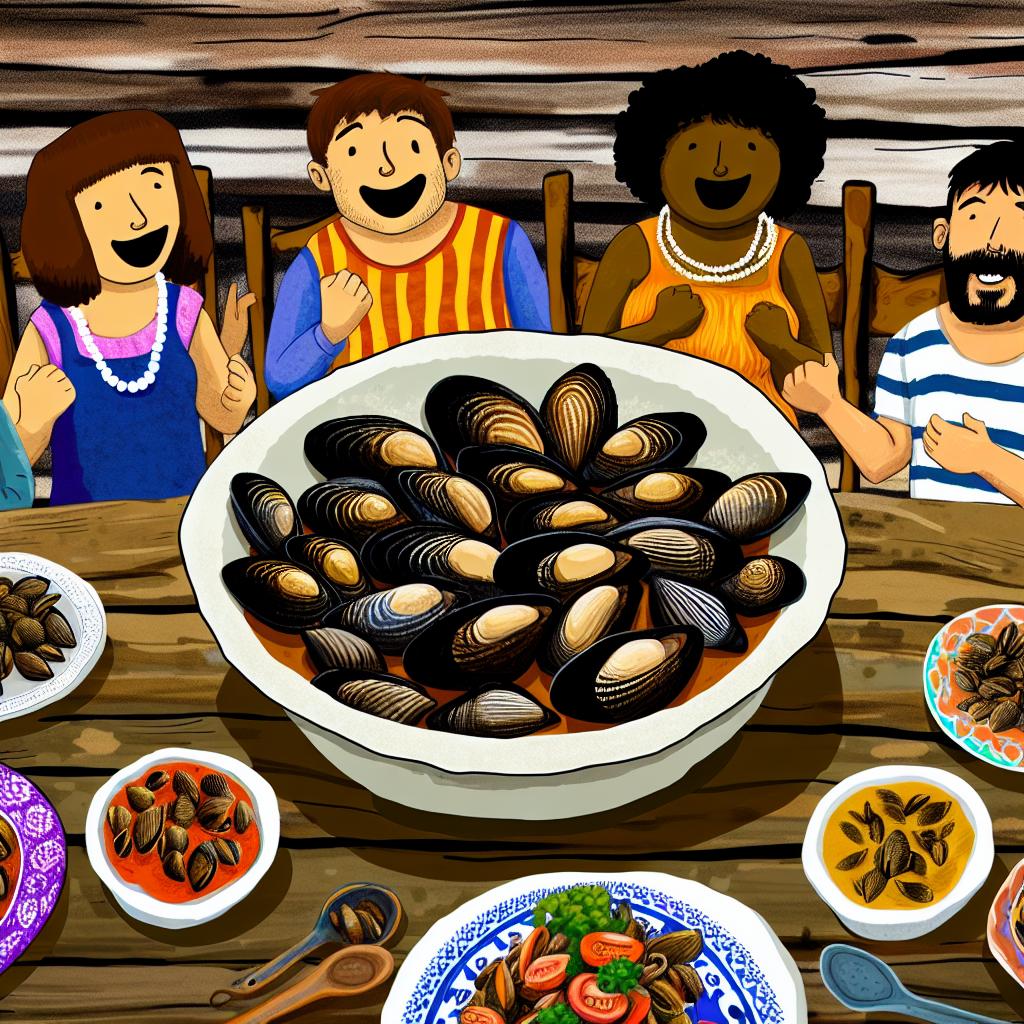
Percebes, known as goose barnacles in English, hold a special place in Spanish cuisine. These distinct crustaceans are native to the rugged coasts of Spain and Portugal, where they cling to rocks and withstand the relentless battering of ocean waves. Their unique flavor and texture make them a sought-after delicacy, capturing the essence of the sea that provides them.
Percebes thrive in intertidal zones, which are areas on the shore that are submerged at high tide and exposed at low tide. These zones, especially those along the Atlantic coasts of Spain and Portugal, provide the ideal environment for percebes. The dynamic nature of this habitat contributes to their unique characteristics, as they are constantly influenced by factors such as salinity, tides, and wave action. This particular setting plays a critical role in defining their flavor profile—a perfect combination of brininess and marine sweetness.
The process of harvesting percebes is not only arduous but also perilous. Known as “percebeiros,” the harvesters risk their lives to collect these barnacles from the rocky coastal cliffs where they grow. The combination of rough seas and slippery, precarious positions make this task dangerous. This challenging method of collection contributes to the high price and rarity of percebes, making them a premium offering in Spanish cuisine.
The skill required to safely collect percebes cannot be overstated. Experienced percebeiros must have a deep understanding of the tides and weather conditions to execute their work successfully. Their expertise allows them to gauge the safest times to venture onto the precarious cliffs where percebes cling. Moreover, understanding the behavior of waves and currents is crucial to avoid accidents. Despite all precautions, the unpredictability of the sea renders this job one of the most hazardous in the fishing industry.
Percebes are often served simply, allowing their natural flavors to shine. Boiling them in salted water is the most common method of preparation, emphasizing their briny sweetness and tender texture. They are typically eaten by twisting off the leathery stalk to reveal the edible interior. This straightforward approach highlights the essence of percebes, celebrating their freshness and the salty tang of the Atlantic Ocean.
While percebes can be enjoyed just as they are, they are sometimes included in dishes that complement their unique taste. Pairing them with traditional Spanish aioli or a squeeze of fresh lemon can enhance their natural flavors. They are also occasionally incorporated into seafood-based dishes, adding an extra layer of complexity and depth.
The subtle, yet distinctive, flavor of percebes allows them to pair well with a variety of ingredients. For those looking to create innovative dishes, percebes can be integrated into pasta or risotto, where their seafood richness adds a savory dimension. Alternatively, they can be grilled lightly, a method that can introduce a slight smokiness, giving an intriguing twist to their usual preparation.
Percebes are more than just a delicacy; they are a representation of Spain’s rich maritime heritage. They are often featured in festive occasions and special gatherings, embodying the cultural significance and pride in the nation’s seafaring traditions. Their inclusion in menus can denote a level of prestige and exclusivity, underlining the culinary expertise and respect for local produce.
Beyond their gastronomic value, percebes are emblematic of the local identity along the coasts of Galicia and Asturias in northern Spain. Their collection and consumption are deeply embedded in the social and cultural framework of these regions. Festivals and local celebrations often highlight percebes as a central feature, bringing communities together and promoting a collective appreciation for locally sourced food.
As with many sought-after marine delicacies, the sustainability of percebes is a concern. Due to their popularity and the demands of harvest, there are ongoing efforts to ensure that these barnacles are collected responsibly. Maintaining a balance between cultural practices and environmental preservation is critical for the continued enjoyment and availability of percebes in Spanish cuisine.
In recognition of the need for sustainable practices, organizations and local authorities have established regulations governing the collection of percebes. These include limiting harvest quantities and implementing closed seasons that allow barnacle populations to recover. Compliance with these regulations helps to protect the ecosystem while sustaining the traditional livelihood of percebeiros.Engagements in cooperative fishing practices and the development of aquaculture techniques offer promising alternatives for ensuring sustainable harvest.
Looking ahead, the future of percebes in Spanish cuisine seems ever-assured, provided that current conservation efforts are maintained and advanced. Educating the consuming public about the importance of sustainable choices can further influence the industry in a positive direction. As culinary palettes continue to evolve, percebes stand as an enduring testament to Spain’s love for marine gastronomy, embodying the delicate balance between tradition and innovation. For more information on Spanish seafood traditions, you can explore resources like Spanish Food Guide for insights into other regional specialties.